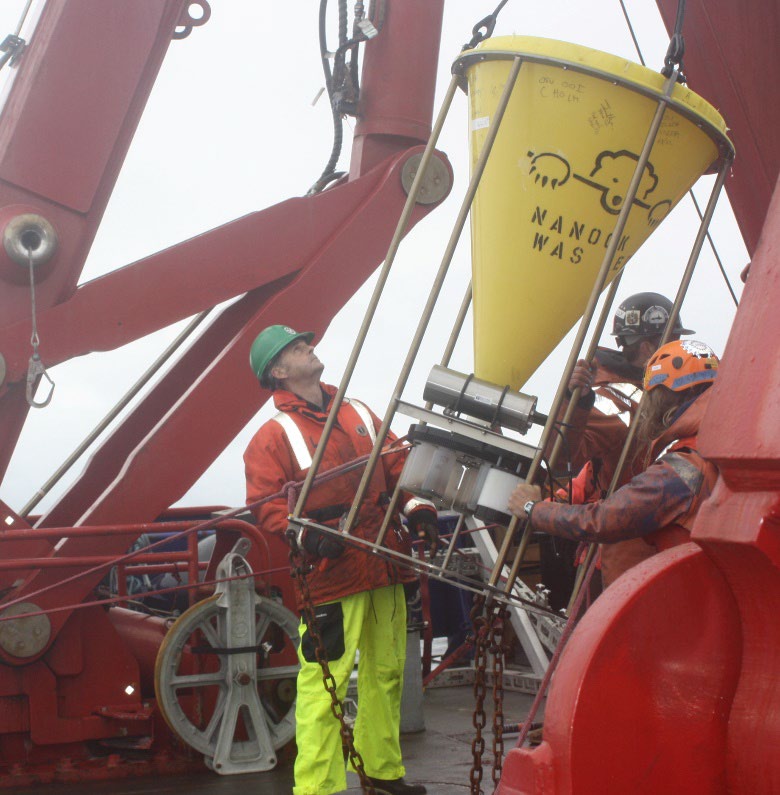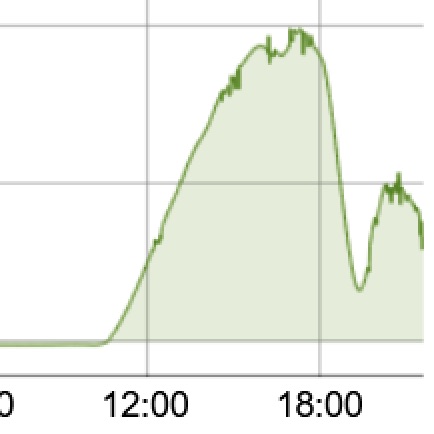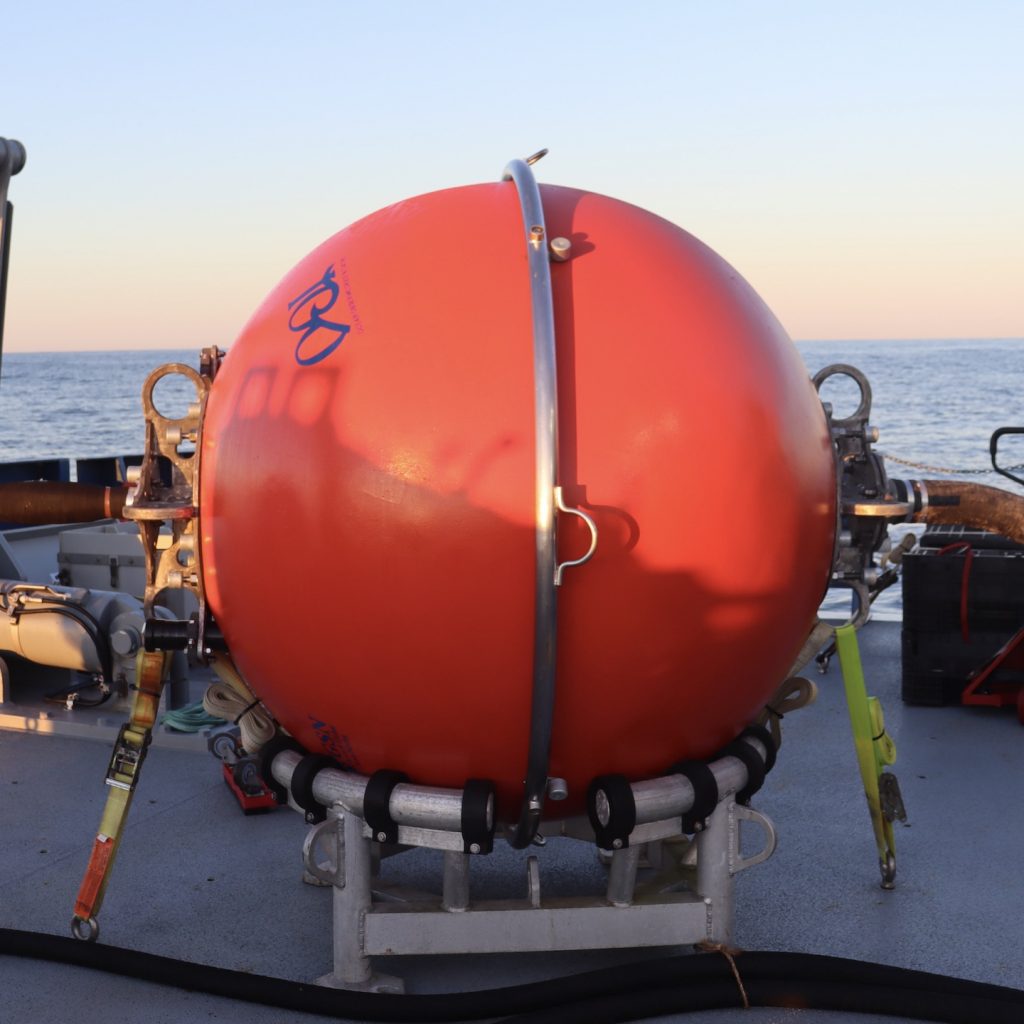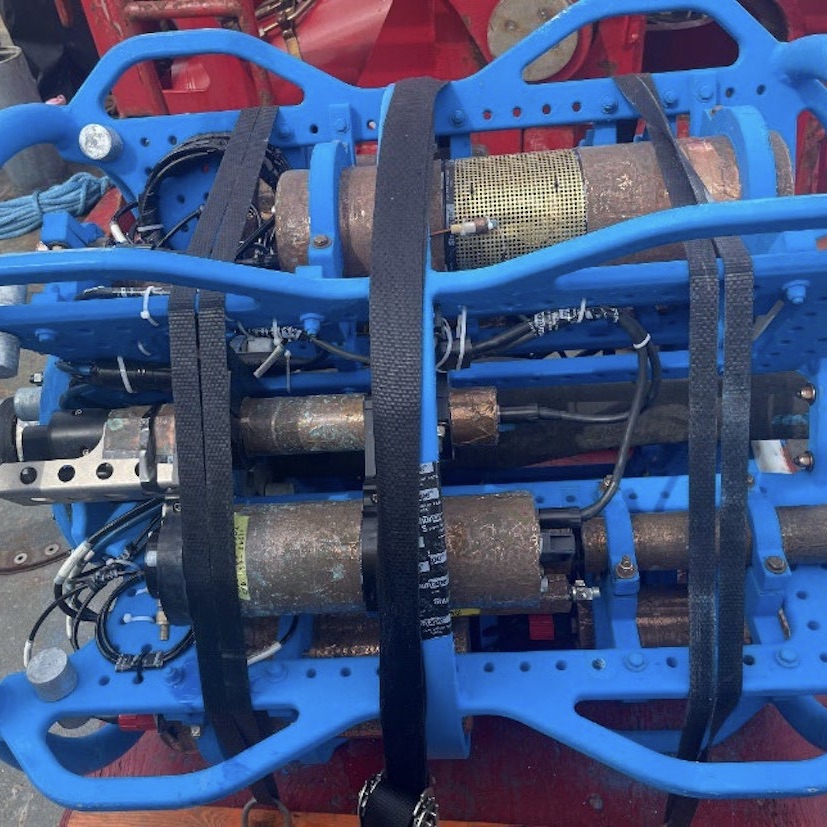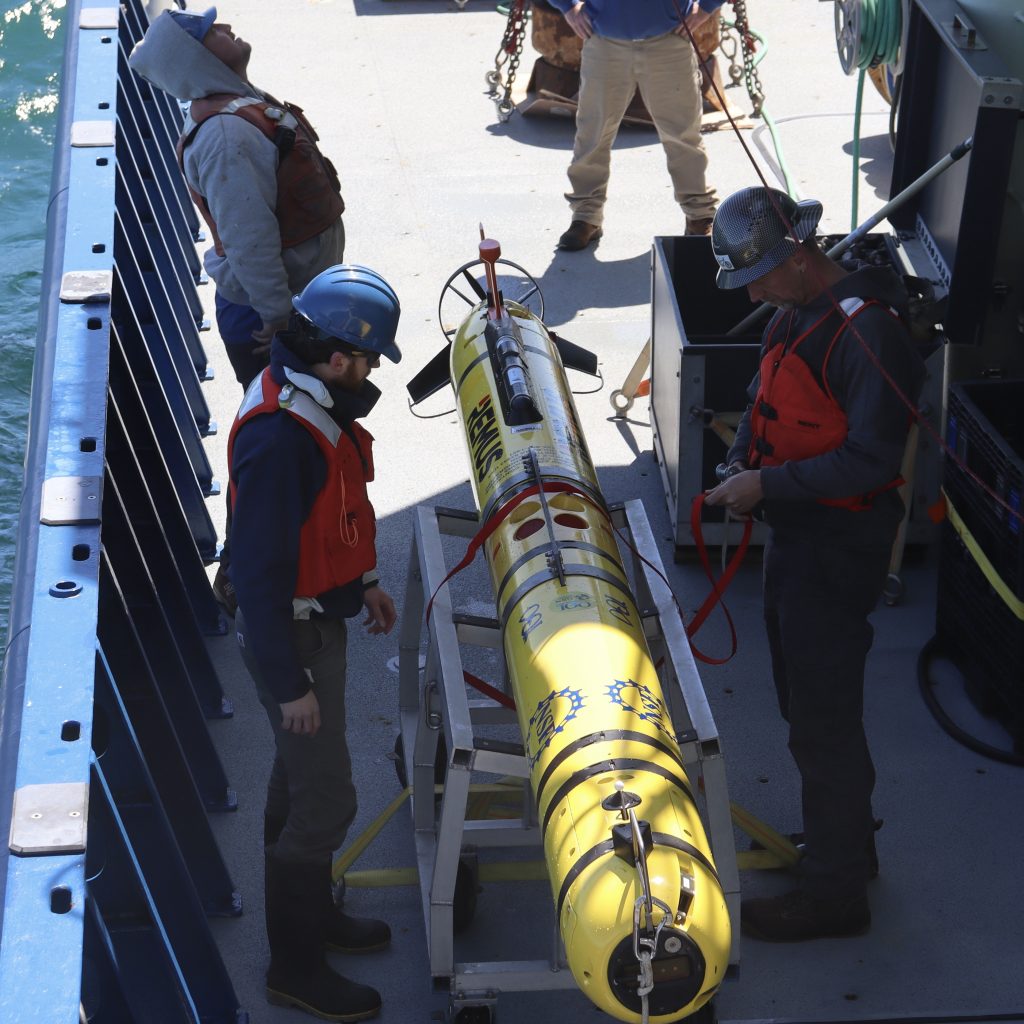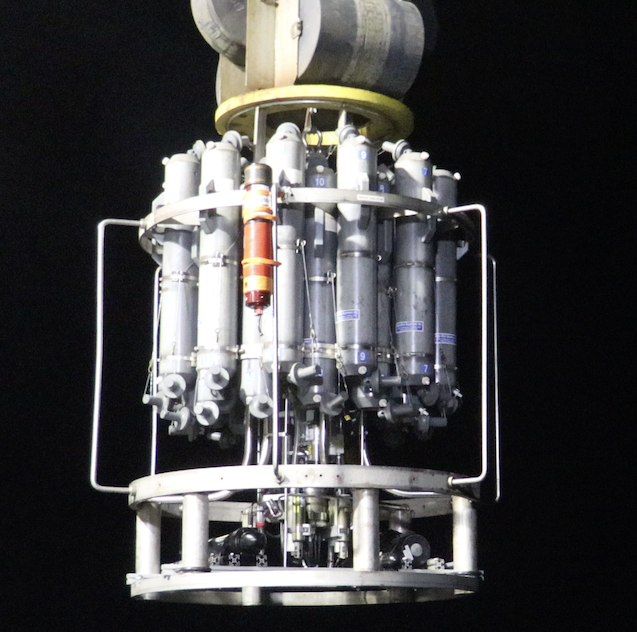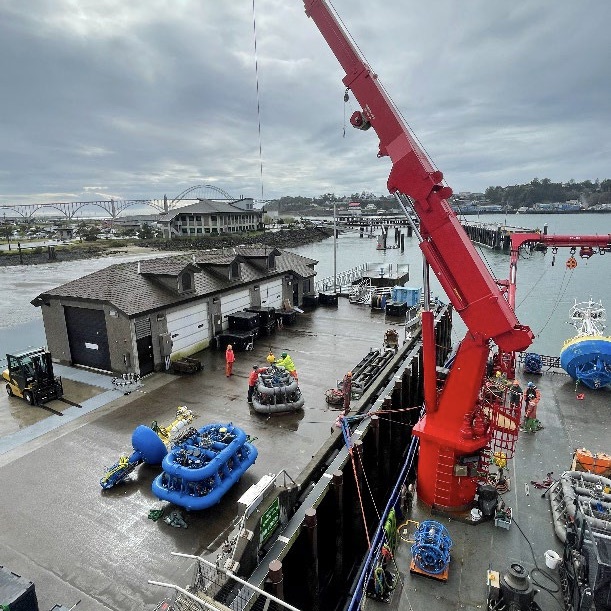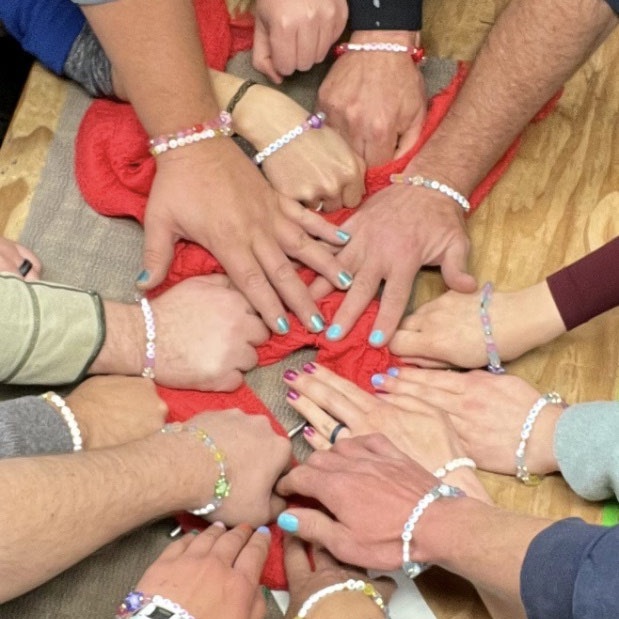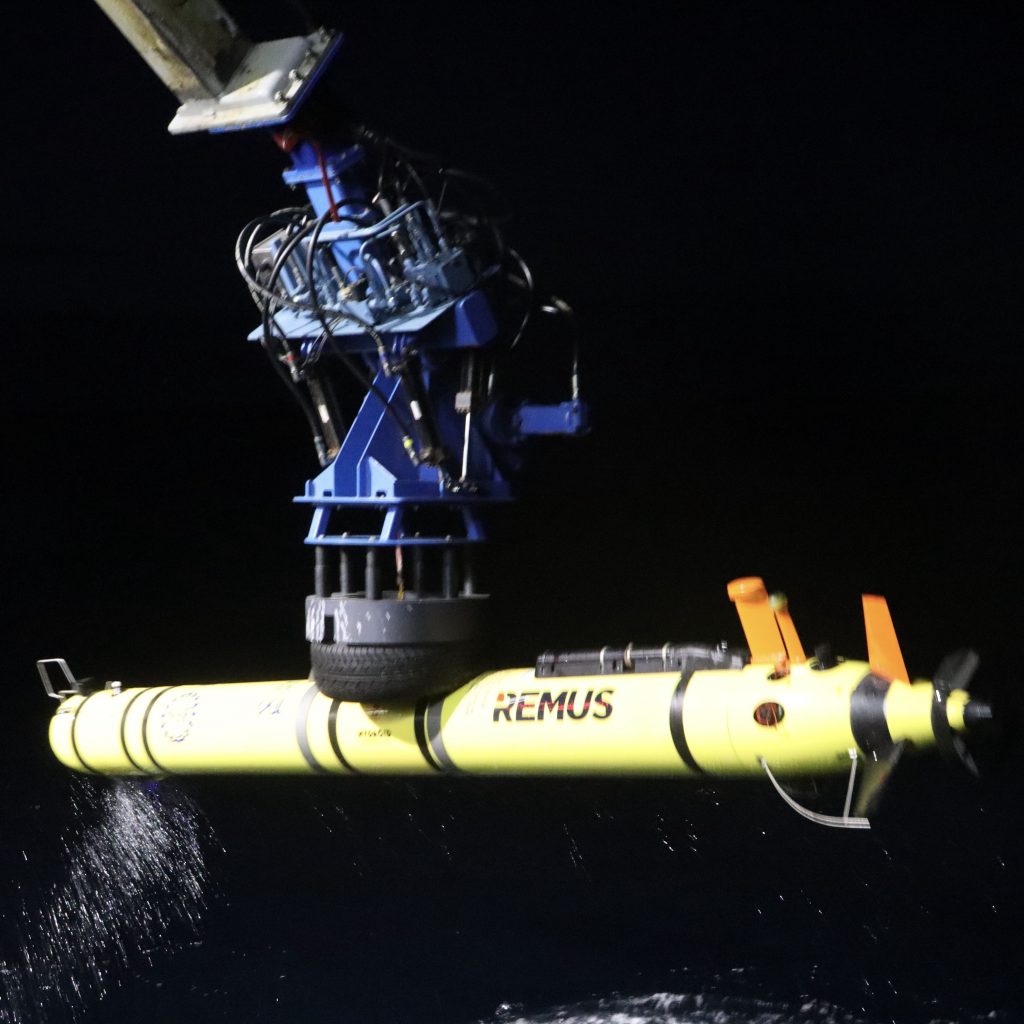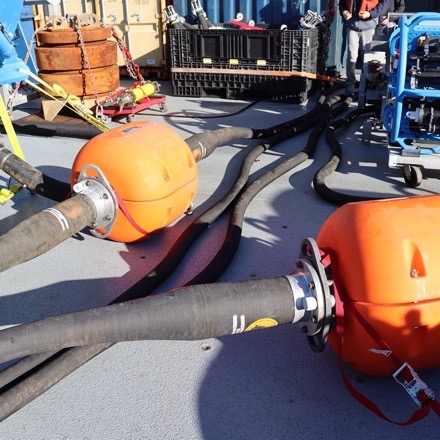Updates
Sediment Traps Day
The Endurance 20 team’s main effort today was to turn a sediment trap mooring. The project is led by professors Jennifer Fehrenbacher (Oregon State University) and Claudia Benitez-Nelson (University of South Carolina). Their team is collecting foraminifera, single-celled plankton, and they are using OOI data to interpret their samples. On the ship with the team…
Read MoreRadiometer Captures Eclipse
The radiometer (light sensor) on the R/V Neil Armstrong’s bow mast sensed the partial eclipse. Sunday 4/7 was a pretty clear day. The radiation increases relatively smoothly towards midday (16:00 UTC is local noon), peaking near 1000 watts per square meter, and then drops off again. Today (4/8) was a very clear, no clouds in…
Read MoreProfiler Moorings Today
High seas are forecast at the end of the week when leg 2 was set to be on site at the new Pioneer location in the Mid-Atlantic Bight. Taking advantage of sunny skies and smooth seas, leg 1 was extended to deploy two coastal profiler moorings. The Pioneer Team successfully deployed two profilers moorings today,…
Read MoreNew Instrument Testing
In addition to the baseline instruments the Endurance Team deploys on each cruise, this Near Surface Instrument Frame has two test instruments. They deploy them adjacent baseline instruments for comparison to evaluate potential technical improvements OOI could make. The test instruments measure pH, pCO2, conductivity, and temperature, which together are used to characterize ocean acidification.
Read MoreIt Takes a Village
It takes a team onboard the R/V Neil Armstrong. The crew and science party work side-by-side to conduct all the deployments and recoveries for the Pioneer Array MAB. Here crew member Scott Loweth hooks the second Autonomous Underwater Vehicle (AUV) after its 20-hour transect and helps guide the vehicle back on board where it will…
Read MoreRegular CTD Casts
CTD casts that measure conductivity, temperature, and depth are a standard oceanographic measurement tool. The Pioneer Array MAB team are making CTD casts with water sampling at the deployment sites. One cast was completed last evening after the successful recovery of the first of two Autonomous Underwater Vehicle transects.
Read MoreBack in Port
The R/V Sikuliaq’s starboard crane is lifting the bases of the Endurance 20 moorings onto the ship. The bases of the moorings, Multi-Function Nodes, house anchors and instruments. They are different colors because the one that will be deployed in shallow water has blue antifouling paint. At approximately 11,000 lbs., MFNs are the heaviest items…
Read MoreFriendship Bracelets
Athena, one of the undergraduate students who refurbishes and assembles the Endurance 20 moorings in Corvallis, made “EA TWENTY” bracelets to commemorate the 20th Endurance Array research cruise. Credit: Jon Fram, OSU.
Read MoreAUV Captured
Once the first AUV had finished its 20-hour transect, it was time to get her back onboard. The Glider Team directed the AUV to surface close to the ship. The AUV was visible with a blinking beacon. A team stood by at the starboard side of the deck with long poles with recovery hooks. …
Read MoreHoses Galore Hold Moorings Together
A flexible connection between the buoy and the anchor of the Coastal Surface Moorings of the Pioneer MAB Array is created by multiple hoses with the capacity to stretch while maintaining an electrical connection (Fig 1). The stretch is necessary to account for wind, waves and currents that push and pull the buoy relative to…
Read More
